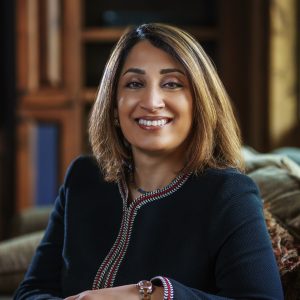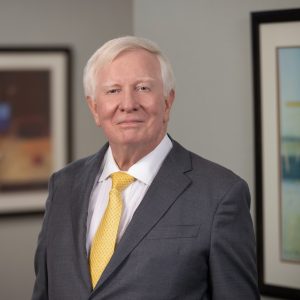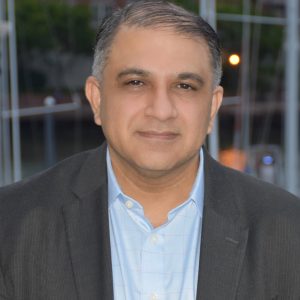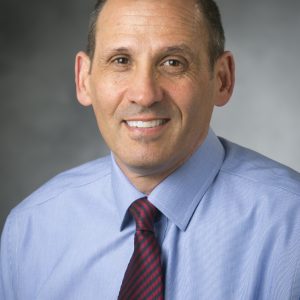CEO of Osmol Therapeutics Leads Virtual Charge to Develop Ground-Breaking Treatment to Prevent Chemo Side-Effects
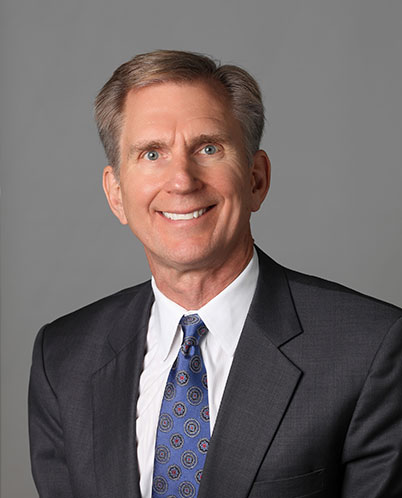
 Bob Linke
Bob Linke
CEO of Osmol Therapeutics Inc.
For breast cancer patients, life-saving chemotherapy can also create life-long medical challenges. Nerve damage, called chemotherapy-induced peripheral neuropathy (CIPN), is a common and potentially permanent, debilitating side effect of the treatment. CIPN can cause issues from tingling and burning sensations to difficulty with fine motor skills and even trouble walking.
When Bob Linke joined Osmol Therapeutics Inc., a development-stage biopharmaceutical company founded in New Haven, Conn., in 2018, he took on multiple challenges right out of the gate. In an interview with Ashton Tweed, Mr. Linke discusses OSM-0205, the company’s ground-breaking CIPN treatment, managing a virtual team during the COVID-19 pandemic, and what he really thinks about Zoom.
Ashton Tweed: Chemotherapy-induced peripheral neuropathy is an interesting niche to address. Why did Osmol decide to target that condition?
Bob Linke: In spite of the introduction of new anti-cancer treatments such as checkpoint inhibitors, chemotherapy remains the backbone of most treatment regimens. Rates of neuropathy caused by this treatment can vary according to treatment type but it’s the highest in the case of platinum-based drugs (70–100%), taxanes (11–87%), thalidomide and its analogues (20–60%), and ixabepilone (60–65%). This means that every year, hundreds of thousands of Americans who are treated with these chemotherapies face a strong likelihood of suffering from painful and potentially permanent nerve damage.
The really frustrating thing is there are currently no approved treatments, so the only way to deal with CIPN is to reduce the dose of chemotherapy or the length of treatment. This is something that neither patients nor physicians want to do because that potentially compromises the cancer treatment and adversely affects survival. CIPN is particularly problematic in breast cancer because patients with breast cancer are most commonly treated with taxanes and can live for decades after treatment, so they could have this disabling condition for the rest of their lives. Taxanes, including Taxol®, is the most commonly used chemotherapy agent in treating breast cancer and the predominant cause of CIPN in breast cancer patients. It is also used to treat lung, ovarian, prostate, and pancreatic cancers.
Keep in mind that neuropathy is not just tingling or numbness in the extremities — it can cause permanently debilitating conditions including loss of balance as well as spontaneous burning, shooting, or electric shock-like pain.
AT: How does OSM-0205 work?
BL: Certain chemotherapy agents use microtubule disruption as their primary mechanism for killing cancer cells. These agents bind with a critical neuronal protein, an off-target effect, that produces an intracellular calcium surge that damages neurons. This calcium surge starts a cascade of neuronal destruction that causes significant damage to nerves in the hands, feet, and other parts of the body. It can even cause damage in the brain because chemotherapy crosses the blood-brain barrier and result in chemotherapy-induced cognitive impairment, also known as “chemo brain.”
Osmol’s work is based on research by Dr. Barbara Ehrlich, a Professor of Pharmacology at the Yale Medical School, of a key protein that regulates intracellular calcium called neuronal calcium sensor-1, or NCS-1. Our drug, OSM-0205, modulates NCS-1 and blocks the calcium surge so that the cascade of neuronal destruction never happens and CIPN doesn’t occur. OSM-0205 would be administered to a patient intravenously just prior to chemotherapy treatment.
AT: What’s currently your biggest challenge in developing OSM-0205?
BL: Like many early-stage biotech companies, raising money to advance our programs is our first priority. Most investors in the oncology space are focused on developing drugs that attack the cancer directly. They are less familiar with oncology supportive care and the major side-effect issues that are associated with current treatment, issues that in turn can profoundly affect the quality of life as well as ability to maintain adequate treatment intensity. As a result, there is a lot more education required upfront to explain the opportunity. That being said, it has been very encouraging to see several emerging biopharma companies focusing on oncology supportive care to address the tremendous need and market opportunity.
AT: You joined Osmol in August 2020, right in the midst of the COVID-19 pandemic. Has the pandemic had an impact on raising funds?
BL: I think for about the first three to six months into the pandemic, people were very reluctant to commit capital when they could not interact with companies directly. That’s changed and now, I don’t see the situation as any different than it was pre-COVID. Investors have adjusted, learning to make investments virtually and management teams have figured out how to raise funds virtually. So, if we had to continue to fundraise virtually, I think biopharma companies would continue to raise money effectively. This is evidenced by the tremendous amounts of capital that have flowed into biopharma in the past year.
AT: Has the lack of in-person interaction due to the pandemic affected how you do your job otherwise?
BL: It hasn’t been difficult given I’ve run virtual companies before COVID-19. When I joined Osmol I hired a virtual team—I had most of the team on board by the fourth quarter of last year. Whether or not COVID-19 had happened, we would have done things exactly the same. The challenge was adjusting to life with COVID and how we had to execute our projects to minimize the impact of COVID on specific projects.
AT: When you’re hiring people to work virtually, do you look for people who have different traits or characteristics than those who would work strictly on-site?
BL: Yes, absolutely. You have to find people who are comfortable working remotely. I find there has to be a level of trust that that person can work effectively remotely, doesn’t need to be interacting with people every day to be effective, and can lead their function virtually.
AT: Not everyone can work from home or even wants to.
BL: Right. Working remotely is not an easy thing. It can be a bit lonely and frustrating at times because you can’t just walk over and talk to your colleague. It also requires someone that has good planning skills because you’re not able to interact in person with the people you work with. As a virtual company, we contract out everything we do. That requires identifying good partners and planning very effectively with those partners so that when you need their services, those services are available.
AT: How do you feel about Zoom? People seem to either love it or hate it.
BL: I rely extensively on Zoom (He laughs). As the CEO of a virtual company, I like Zoom because I can see the faces of my team versus just a voice on the other end of the phone. It helps you understand how your team is really doing and pick up on cues that you cannot on the phone. So, Zoom has been a benefit for me as a CEO, and I think my team would say that, as well.
AT: What is the best decision you’ve made for Osmol so far?
BL: The decision that’s had the biggest impact is when I contracted for market research with breast cancer oncologists at leading U.S. cancer centers to learn more about the disease and get feedback on our product. The market research showed CIPN was an even bigger problem than I thought and, if OSM-0205 were shown to be even modestly effective at preventing CIPN and was approved, it would be utilized by oncologists. It’s the No. 1 issue oncologists deal with in treating breast cancer patients. To me, this confirmed that there is a tremendous need for effective therapy and that this need will only grow.
AT: What’s next for Osmol?
BL: We have a few more Investigational New Drug application (IND)-enabling studies to conduct prior to beginning human studies. We need to finish those IND-enabling studies so we could start clinical trials next year.
AT: You have quite a bit of experience leading biopharma companies. What did you learn from those experiences?
BL: Coming out of Big Pharma, I had no idea what it takes to raise capital. When I was at Baxter International Inc., I led many of the product development programs. I’d propose budgets to develop and commercialize new products and present them to the senior management team of the “Bank of Baxter,” which would decide whether to provide funding or not. So, it was easy—I got a yes or a no. As an entrepreneur, there is no “Bank of Baxter” to rely on. Instead, I learned you have to work very hard to identify the right funding sources with interest in the type and stage of deal you are offering investors, carefully craft your investment opportunity message to each investor, and determine the best way to approach each investor so you stand out from the crowd. Nothing is better than a personal introduction.
AT: So, what ultimately drew you to Osmol?
BL: I decided to go into healthcare after grad school to work on problems that could have a significant impact on people. What attracted me to Osmol was the big problem—CIPN, where there are no approved treatments as well as the very impressive preclinical data that Dr. Ehrlich generated supporting OSM-0205’s potential. The market research confirmed that patients and clinicians are desperate for solutions to prevent CIPN and that I had made the right decision.
Bob Linke is the CEO of Osmol Therapeutics. He also serves as the Executive Chairman of Embera NeuroTherapeutics and IonSense. Over the course of his career in biopharma, Mr. Linke held the title of President and CEO at Embera NeuroTherapeutics, Rapid Micro Biosystems Inc., and Periodontix Inc. He was also Vice President, U.S. Marketing and Sales, at Sunstar Americas Inc. and held executive roles earlier in his career at Caremark International Inc. and Baxter International Inc.
Mr. Linke earned an MBA from Harvard Business School and a BA in economics and mathematics from Albion College. He lives in Sudbury, Mass., with his wife, Kathy. The couple has an adult son and daughter.
Question for readers:
What have been your biggest challenges in working virtually?


